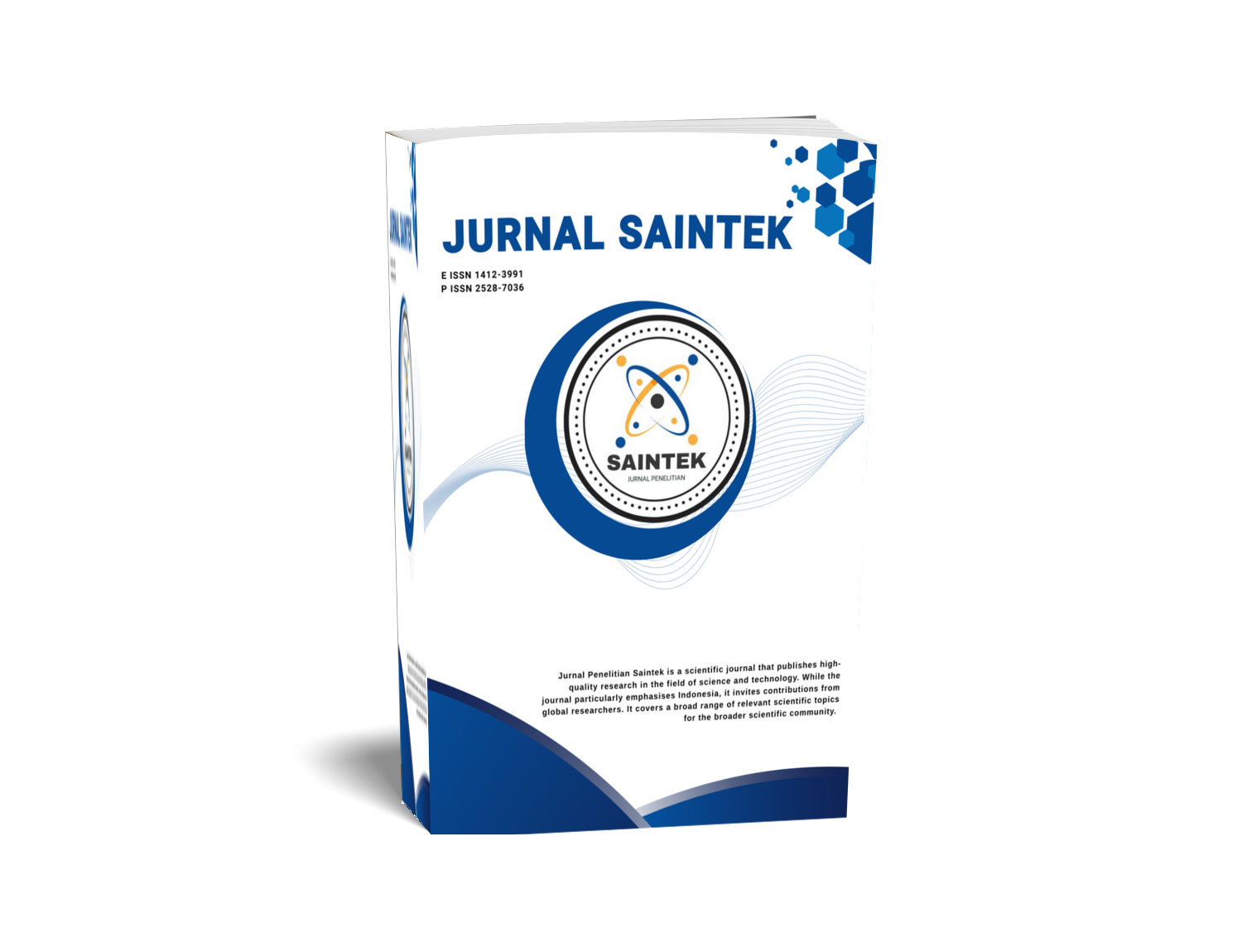PUTILIZATION OF PETROCK OIL AS ALTERNATIVE FUEL MACHINES DIESEL
DOI:
https://doi.org/10.21831/jps.v13i1.181Keywords:
Biodiesel, Jatropha Oil, Opacity, Work method Diesel engineAbstract
This study aims to determine the characteristics of jatropha oil biodiesel, both in terms of physics and chemistry. Biodiesel is attempted to be used as a diesel fuel substitute for diesel motors. Further analyzed differences in the performance of diesel motors when using jatropha oil biodiesel fuel and when using diesel.
In its implementation, this research begins by examining jatropha oil biodiesel characteristics physically and chemically. Once tested its characteristics, the fuel is used directly on diesel engines to measure opacity, torque, power, and the amount of fuel consumption and then compared with the use of diesel fuel. The comparison analysis of jatropha oil and diesel biodiesel characteristics was all submitted to UGM Chemical Engineering Laboratory. Furthermore, for the measurement of exhaust emissions, torque, power, and fuel consumption is submitted to the Energy Conversion Laboratory of Mechanical and Industrial Engineering Department of FT UGM.
Based on the analysis of fuel characteristics, it is found that biodiesel developed as diesel engine fuel derived from jatropa oil (Jatropa Curcas L.) has the same characteristics even on some items that is on the analysis of heating value has better characteristics compared with diesel. The amount of exhaust emissions in the form of the concentration of smoke (opacity) has the greatest decrease, ie the average decrease obtained by 82%, with the best mixture at fraction of 20% .The magnitude of torque resulting from jatropha oil biodiesel testing after compared with diesel at various fractions of the mixture obtained results that the resulting torque increased by an average of 19%. The highest torque was obtained in 20% biodiesel mixture. Furthermore, the amount of power generated from the biodiesel usage of the engine produces a rise in power in the shaft at various rpm variations, and the fraction of the biodiesel mixture has an average power increase of 19%, with the highest power being obtained in the 20% mixture. Fuel consumption for Jatropha curcas biodiesel experienced an average decrease of 24.2% with the best fraction obtained in the 20% mixed fraction.
References
Anonim. (2005). Development Jatropha Curcus Plantation As A Source of Row material for Biodiesel, Directorate General Of Estate Crops, Jakarta, June.
Andi Nur Alamsyah. (2006). Biodiesel Jarak Pagar Bahan Bakar Alternatif yang Ramah Lingkungan.
Anton L. Wartawan.(1983). Minyak pelumas (Pengetahuan dan Cara Penggunaan). Jakarta: Penerbit Gramedia. Balai Rekayasa Desain dan Sistem Teknologi BPPT (2003). "Laporan Kegiatan Pengembangan Biodiesel Sebagai Energi Alternatif". Jakarta.
Bosch, R. (2000). Automotive Hand Book 5th Edition. Stuttgart: Robert Bosch GmbH. Darnoko, D. and Cheryan, M.. (2000). Kinetic of Palm Oil Transesterification in a batch reactor, JAOCS, Vol 77 No. 12.
Ferguson, Colin R. (1986). Internal Combustion Engine (Applied Thermosciences). Canada: John Wiley and Sons, Inc.
Forum Biodiesel Indonesia. (2005) "Minutes of meeting Pertemuan Forum Biodiesel Indonesia 18 Februari 2005", Gedung BANI Jakarta.
Ganesan, V. (2003) Internal Combustion Engine. New Delhi India: Tatra McGraw – Hill Publishing Co.
Hamiltor, C. (2004). Biofuel Made Easy. Melbourne: Australian Engineers Institute.
Hartati, I., Yulianto, M.E., Paramita, V. (2006),"Prestudy of the fatty Acid Production from Palm Oil Fresh Fruit Through Direct Enzymatic Hydrolisis Process", PROSIDING Seminar Nasional MIPA Kimia UNS, ISBN: 979-5624-27-2, page 252 – 256.
Heywood, John B. (1989). Internal Combustion Engine Fundamentals. New York: McGraw-Hill Book Company. 44 Pemanfaatan Minyak Jarak Pagar Sebagai Bahan Bakar Alternatif Mesin Diesel (Suhartanta dan Zainal Arifin)
Hirao Osamu dan Pefley, R.K. (1988). Present and Future Automotive Fuel. USA: A Wiley Interscience Publication.
Kazunori H., Eiji K., Hiroshi T., Koji T., Daizo M. (2001). Combustion Characteristics of Diesel Engines with Waste Vegetable Oil Methyl Ester, The Fifth Symposium on Diagnostics and Modeling of Combustion in Internal Combustion Engines, July 14, Nagoya.
Keith Owen and Trevor Coley. (1995). Automotive Fuel Reverence Book. Warrendale, USA: Society of Automotive Engineers, Inc.
Ketaren, S. (1986). Minyak dan Lemak Pangan, edisi 1. Jakarta: Penerbit Universitas Indonesia (UI Press). Mittelbach, M. and Remschmidt, C. (2004), "Biodiesel, The Comprehensive Handbook".
Obert, F. Edward. (1973), Internal Combustion Engines and Air Polution. New York: Harper and Row Publishers.
Pertamina UPDN III. (1998). Lubricant Product Description. Jakarta: Pertamina UPDN III.
Popovich, M. and Hering, C. (1959). Fuels and Lubricant. California: John Wiley and Sons.
Prakoso, T, Soerawijaya, T.H., Reksowardoyo, I,K, Ircham, M., Sukarsih, D., Setyawan, A. (2005). "Pilot Scale Biodiesel Processing Units by utilizing multistage Non-uniform reaction method". Proceeding WREEC Conference Jakarta.
Priyanto, U. (2007). "Pemanfaatan Bio Fuel Sebagai Bahan Bakar Alternatif". Seminar Nasional, Menyikapi Krisis Energi dan Perkembangan Energi Alternatif di Indonesia, HMTG Universitas Gadjah Mada, Yogyakarta.
Soerawijaya, T.H. (2006). Raw Material Aspects of Biodiesel Production in Indonesia.
Wiranto Arismunandar. (1977). Motor Bakar Torak. Bandung Indonesia: Penerbit ITB Bandung.
Downloads
Published
How to Cite
Issue
Section
Citation Check
License
Who Can Submit?
Any individual may submit an original manuscript for consideration for publication in Jurnal Penelitian Saintek as long as they hold the copyright to the work or are authorized by the copyright owner(s) to submit it. Authors retain initial ownership of the copyrights to their works prior to publication, except in cases where, as a condition of employment, they have agreed to transfer copyright to their employer.
User Rights
Jurnal Penelitian Saintek is an Open Access journal. Users are granted the right to read, download, copy, distribute, print, search, or link to the full texts of articles, provided they comply with the conditions of the Creative Commons Attribution-ShareAlike License 4.0 (CC BY-SA 4.0).
https://creativecommons.org/licenses/by-sa/4.0/
Author Rights
Authors retains copyrights.
Jurnal Penelitian Saintek by http://journal.uny.ac.id/index.php/saintek is licensed under a Creative Commons Attribution-ShareAlike 4.0 International License.










